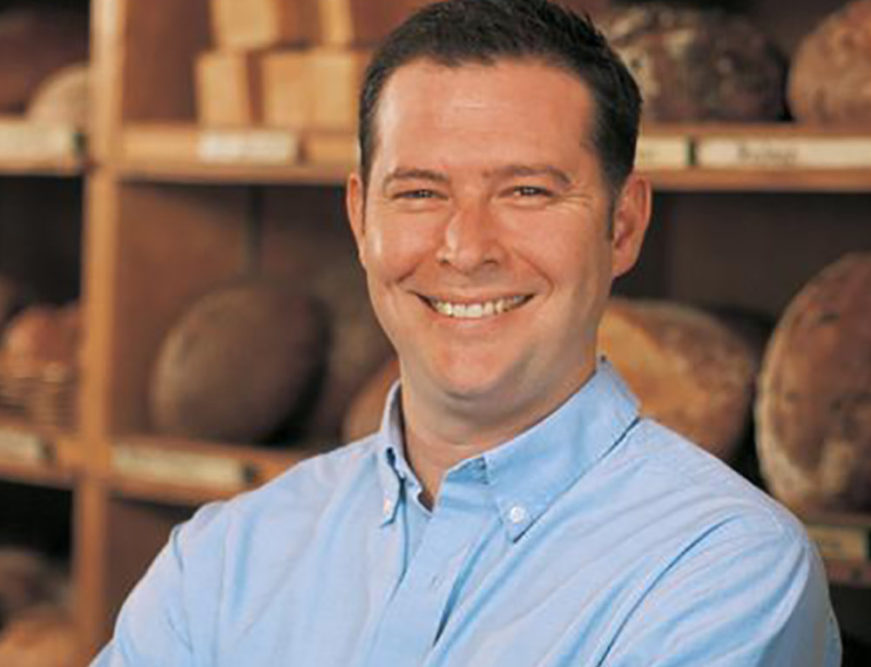Overall, where do you see the artisan bread business heading in 2020 and beyond?
DAVIS: I think 2020 is going to be the year of bread — with more health-focused ingredients and baking techniques, I think we’ll see bread once again becoming a staple in people’s diets. Experimentation, medicinal ingredients and flours will be a major trend in the artisan bread space next year, as consumers continue to accept unique and adventurous flavors like turmeric and paprika.
What’s ahead for the potential of vegetable/fruit flours?
DAVIS: While the incorporation of vegetable and fruit-based flours is relatively new to the bakery scene, many bakers, including our staff at La Brea Bakery, have been experimenting with these alternative ingredients behind the scenes for years. In addition to health benefits, vegetable and fruit flours have the ability to create products with entirely new flavors and textures. Banana flour has been gaining popularity as a gluten-free ingredient for baked goods and coconut flour has flooded the market due to its low-carb, gluten-free qualities.
We can also expect to see some experimentation with pea tendrils, which have medicinal uses. As a result of our experimentation with pea tendrils at La Brea Bakery, we’ve produced a wide range of purple, blue-hued loaves of bread. As we’ve seen firsthand, ingredient measurement and technique must be extremely precise to produce the desired color result when experimenting with vegetable and fruit flours. Not only will these flours alter the visual aspect of some baked goods and breads, but they will also alter the taste — most vegetable and fruit flours will introduce a new sweetness to their products.
How can bakers utilize vegetable juices to create amazing breads?
DAVIS: Bakers have started swapping water for vegetable juices when baking certain breads. Not only do the juices incorporate another opportunity for added health benefits, but they also enhance breads from both a visual and flavor perspective. Depending on the type of vegetable juice incorporated, breads will bake in many different colors like purple and orange and produce distinct flavor profiles. At La Brea Bakery, we’ve been integrating beet juice, carrot juice and ginger juice, among others, to further enhance our breads visually and from a flavor perspective.
What about the use of medicinal spices in breads — is this a trend with traction?
DAVIS: The incorporation of medicinal spices is the latest effort to incorporate health conscious ingredients into breads. Medicinal spices and ingredients have gained a lot of popularity in recent months. At La Brea Bakery, we’ve begun experimenting with recipes that incorporate spices like turmeric and smoked paprika. These spices further enhance bread’s health benefits and drastically alter the way bread looks. We’ve been playing around with adding turmeric to our sourdough loaf. With sourdough’s existing reputation of being easier to digest the addition of turmeric further enhances its health benefits.
Any other interesting developments in trending flavors?
DAVIS: As new flours come onto the scene, we can expect to see an increase in the mixing of certain flour types. Through La Brea Bakery’s experimentation, we’ve found some flours cannot perform on their own, but when combined with others, we’re able to introduce new flavors, colors and textures that we couldn’t have accomplished with a singular flour. Additionally, with an increased popularity in sharing food on social media, we can expect to see bakers continue to experiment with colorful ingredients — anything to make food visually appealing and enticing for a social media audience.
How are supplies of ancient grains (quinoa, einkorn, etc.) reaching the point where bakers can more affordably offer such options?
DAVIS: As ancient grains become more popular and demand increases, sources become more readily available and the overall cost becomes more affordable. This demand also expands the types of grain being grown which provide bakers with a great range of grains to experiment with creating unique flavor combinations
How do you assess America’s demand for gluten-free breads?
DAVIS: The demand for gluten-free bread options is not going away, but at the same time, consumers’ understanding of gluten-free options is broadening. With the introduction of new ingredients like vegetable and fruit flours, gluten-free bread offerings will continue to be a popular bread option. Additionally, with the increased incorporation of sprouted grains, consumers are beginning to reevaluate bread. Bread is no longer seen as a “bad” food — but instead as a nutritious food with added health benefits.




